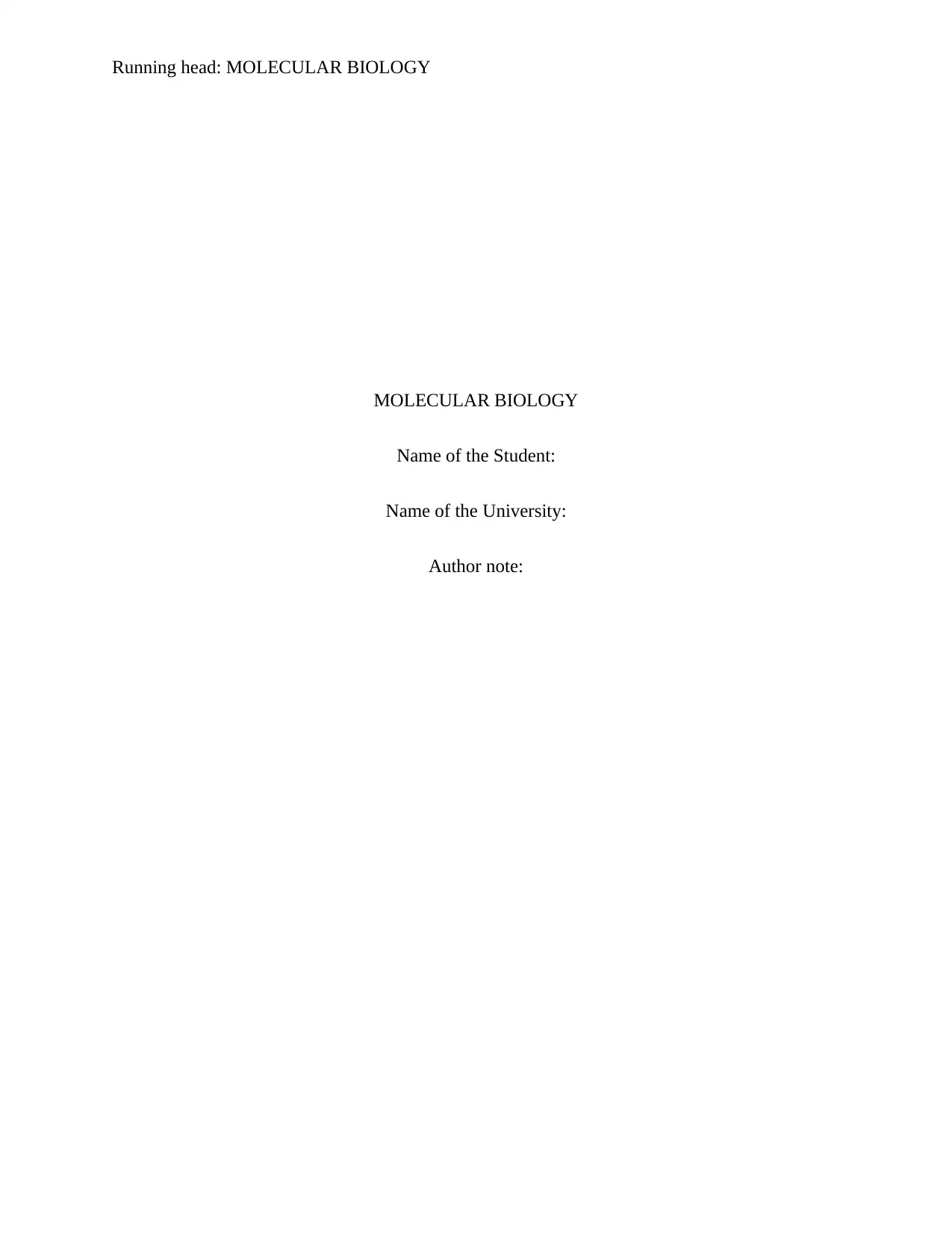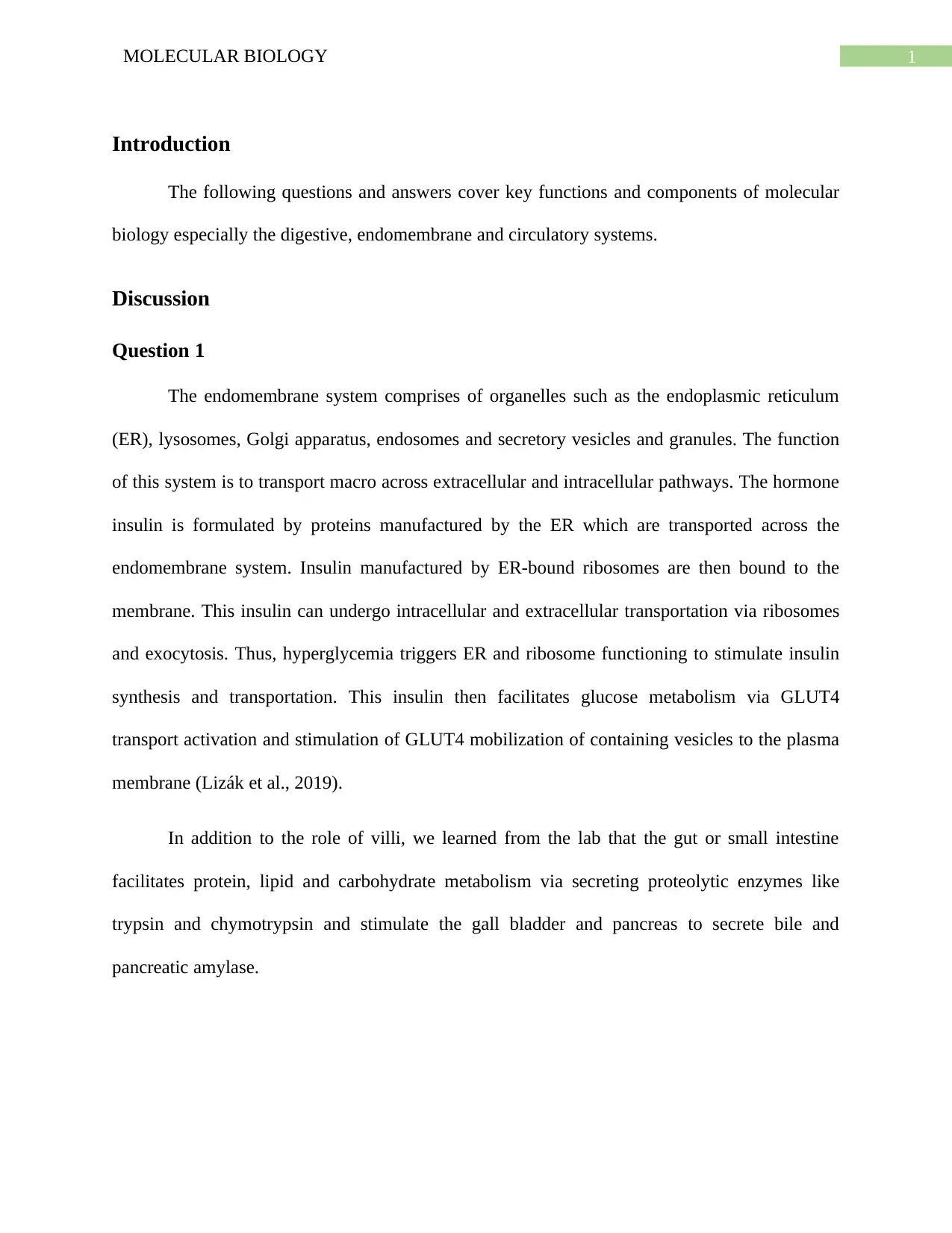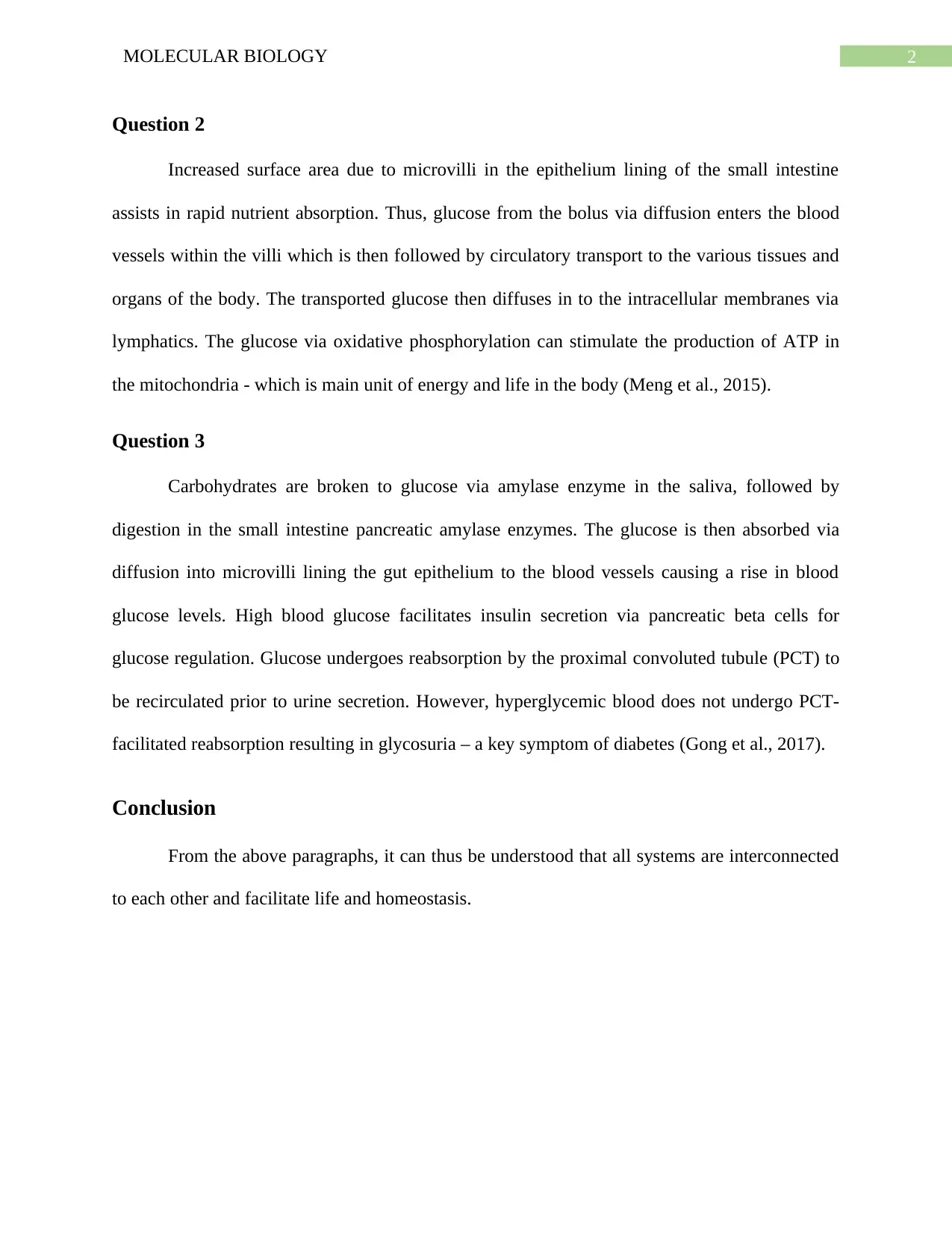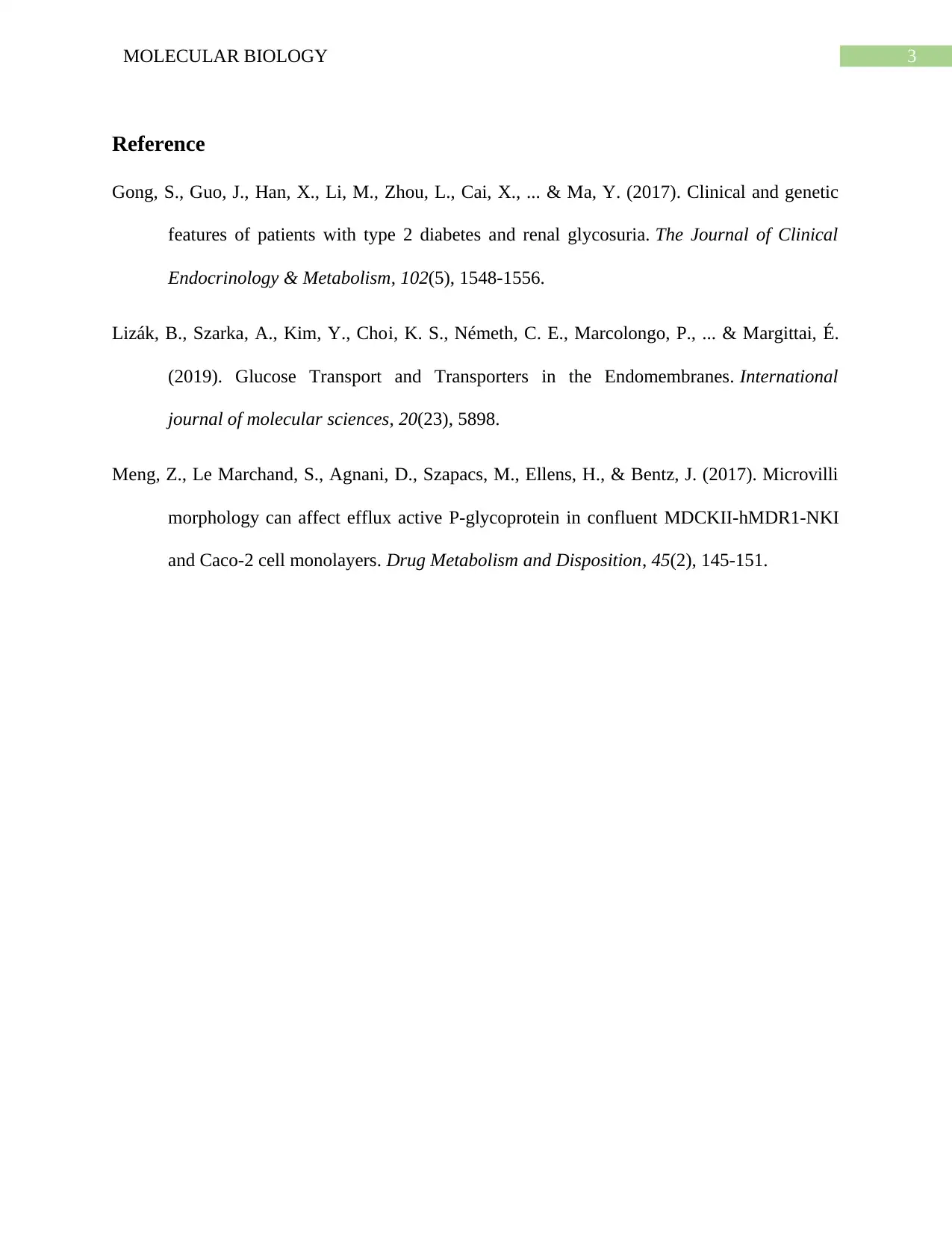Molecular Biology Homework: Systems, Glucose, and Insulin Production
VerifiedAdded on 2022/08/11
|4
|644
|23
Homework Assignment
AI Summary
This molecular biology assignment delves into the interconnectedness of various biological systems, focusing on the endomembrane, digestive, and circulatory systems. It examines the role of the endomembrane system, particularly the endoplasmic reticulum (ER), in insulin production and transportation, highlighting the cellular response to hyperglycemia. The assignment further explores nutrient absorption in the small intestine, emphasizing the role of microvilli and the subsequent transport of glucose to various tissues and organs via the circulatory system. The process of carbohydrate digestion, glucose absorption, and the role of insulin in regulating blood glucose levels are also discussed. Finally, the assignment touches upon the implications of hyperglycemic blood and the condition of glycosuria, linking these concepts to diabetes. The conclusion emphasizes the interdependence of these systems in maintaining homeostasis and overall life processes.
1 out of 4





![[object Object]](/_next/static/media/star-bottom.7253800d.svg)